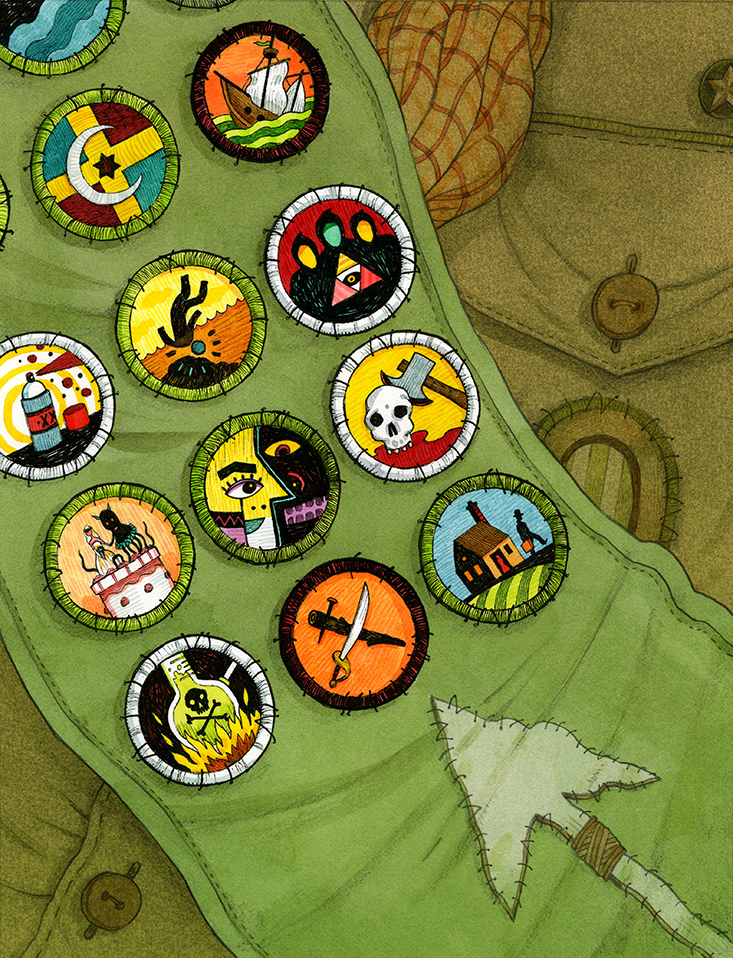
The Broad Institute of MIT and Harvard
This was big news last week, when late on Monday, the Broad Institute, a biomedical research center, announced a $650 million donation for psychiatric research from the Stanley Family Foundation — one of the largest private gifts ever for scientific research.
This news broke the same day as a new article in the journal Nature - Biological insights from 108 schizophrenia-associated genetic loci - revealed research that identified an additional 83 genes linked to schizophrenia, as well as confirming 25 previously identified genes - now a total of 108 genes are linked to schizophrenia.
With 108 possible genes linked to schizophrenia, we know little about the specific combinations of genes, their epigenetic triggers, their environmental factors (both physiological and relational) that may turn off or on specific genes, and a lot of other variables.
For example, we know that physical and emotional neglect is more linked to psychosis and schizophrenia than is physical and sexual abuse. For more background on a relational view, see A relational view of causality in normal and abnormal development (2002).
Anyway, this article is about the generous donation given to the Broad Institute. It's wonderful that they gave such a huge sum in support of research, however, by giving it to an organization that focuses on psychiatric research (psychopharmacology and genetics) rather than a wider bio-psycho-social model.
Spark for a Stagnant Research
A $650 Million Dollar Donation for Psychiatric Research
By Carl Zimmer and Benedict Carey
July 21, 2014
“You’re talking to a guy who went from psychotic to normal with some pills,” said Jonathan Stanley, who was found to have bipolar disorder in the 1980s. The donation of a foundation started by his father is one of the largest private gifts ever for scientific research. Credit Max Reed for The New York TimesONE DAY IN 1988, a college dropout named Jonathan Stanley was visiting New York City when he became convinced that government agents were closing in on him.
He bolted, and for three days and nights raced through the city streets and subway tunnels. His flight ended in a deli, where he climbed a plastic crate and stripped off his clothes. The police took him to a hospital, and he finally received effective treatment two years after getting a diagnosis of bipolar disorder.
“My son’s life was saved,” his father, Ted Stanley, said recently. When he himself was in college, he added, “those drugs didn’t exist; I would have had a nonfunctioning brain all the rest of my life.”
The older Mr. Stanley, 84, who earned a fortune selling collectibles, created a foundation to support psychiatric research. “I would like to purchase that happy ending for other people,” he said.
Late on Monday, the Broad Institute, a biomedical research center, announced a $650 million donation for psychiatric research from the Stanley Family Foundation — one of the largest private gifts ever for scientific research. Audio
It comes at a time when basic research into mental illness is sputtering, and many drug makers have all but abandoned the search for new treatments.
Despite decades of costly research, experts have learned virtually nothing about the causes of psychiatric disorders and have developed no truly novel drug treatments in more than a quarter century.
Broad Institute officials hope that Mr. Stanley’s donation will change that, and they timed their announcement to coincide with the publication of the largest analysis to date on the genetics of schizophrenia.
The analysis, reported by the journal Nature on Monday, identified more than 100 regions of DNA associated with the disease. Many of them contain genes involved in just a few biological functions, like pumping calcium into neurons, that could help guide the search for treatments.
“For the first time, there’s a clear path forward,” said Eric Lander, the president of the Broad Institute.
Experts not affiliated with the institute or the new paper agreed that the news on both fronts was good, but characterized the research as a first step in a long process. “The signals they found are real signals, period, and that is encouraging,” said David B. Goldstein, a Duke University geneticist who has been critical of previous large-scale projects. “But at the same time, they give us no mechanistic insight, no targets for drug development. That will take a lot more work.”
Jonathan Stanley, now 48, cannot explain why he suddenly developed bipolar disorder at 19. All he knows is that his brain responded well to lithium. He was eventually able to return to college, complete law school and become a lawyer. “You’re talking to a guy who went from psychotic to normal with some pills,” he said.
When scientists began to discover psychiatric drugs like lithium in the mid-20th century, they did so mostly by accident, not out of an understanding of the biology of the diseases they hoped to cure. For many years, they worked backward, hoping that by figuring out the action of the drugs, they could understand the causes of the diseases. But they came up empty.
Some researchers argued that a better strategy would be to find the genes involved in psychiatric disorders. This approach would give them new molecular targets for drugs they could test.
Yet the staggering complexity of the brain has yielded few secrets. More than 80 percent of the roughly 20,000 genes in human DNA are active in the brain.
In the 1990s, many scientists argued that the best approach to find “mood genes” was top-down. They would identify promising genes based on their biological properties and then survey their variants in people with and without a diagnosis.
But this approach was something like trying to find a thief in a crowd, based on a hunch of what he or she might look like. The research was “pretty much completely useless,” Dr. Lander said. “It turns out we are terrible guessers.”
By the early 2000s, the ability to decode human DNA had vastly improved, and scientists could look across our complete complement of genetic material, known as the genome, comparing samples from ever-larger groups of people. Ted Stanley’s first donation to the Broad Institute — $100 million in 2007, to found the Stanley Center for Psychiatric Research — went to support precisely such research.
Yet these studies were disappointing, too, and many researchers thought they were a dead end. “We were saying, ‘Maybe it isn’t the right way to go,’ ” Dr. Lander said.
Soon, the Broad Institute joined forces with scores of other research groups to form a consortium that could pool tens of thousands of subjects for analysis. In 2011, the consortium reported five genetic markers associated with schizophrenia. The group added more people to its studies and found even more genetic links.
The new paper in Nature is a culmination of the effort to date. The consortium analyzed 37,000 people who had schizophrenia and 114,000 who did not. It found 83 regions of the genome linked to the disorder that had not been previously flagged, and confirmed 25 previously identified ones, bringing the total to 108.
Dr. Lander cautioned that each variant accounts for only a tiny portion of the risk of developing schizophrenia. “It shouldn’t be used for a risk predictor,” he said.
Still, Dr. Samuel Barondes, a professor of neurobiology and psychiatry at the University of California, San Francisco, who was not involved in the study, called the findings encouraging. Even though schizophrenia is a “diverse disorder, with a horribly complicated genetic basis,” he said, “it is possible to pick up a reliable genetic signal if you have enough people.”
Other research teams are making progress on other conditions, such as bipolar disorder and autism, and finding that some mutations are rare while others are common variants.
On Sunday, an international team of scientists reported a study in Nature Genetics in which they compared 466 autistic people to 2,580 others. They found that most of the genetic risk of autism involved common mutations.
But these studies of brain disorders are also revealing a deep complexity that could pose an obstacle to rapid progress to effective drugs.
For example, recent research has found that mutations in the very same gene can cause a wide range of brain disorders, including autism, schizophrenia and epilepsy. “We are implicating the exact same genes across really different neuropsychiatric disorders,” Dr. Goldstein said. “We have no idea at all about why that is, and the only way to find out is to do some hard biology — to find out not only which genes matter, but what about them matters.”
That will take time and will probably produce plenty of reversals and spurious predictions. “Expect no grand-slam home runs,” said Dr. Allen Frances, professor emeritus of psychiatry at Duke and author of “Saving Normal,” a critique of psychiatric diagnosis. “There will be lots of strikeouts and only occasional singles.” The new study in Nature found that many risk variants clustered around specific body functions, like the immune system and calcium transmission in brain cells.
To understand their underlying biology, Broad researchers plan to grow neurons with mutations in the genes they have discovered, to see how they differ from normal cells. They will engineer mice with some of the mutations to see how their brains are affected. The scientists hope these experiments will lead them to hypotheses about the biology underlying psychiatric disorders — which they will test by giving mice drugs that target specific molecules in the brain.
These studies will be expensive, which is where the Stanley foundation comes in. Last year, after the death of his wife, Vada, Mr. Stanley, the founder of MBI, began considering what he would do with his fortune. He decided that his first gift to Broad Institute was not enough.
“After I’m gone,” he said, “I just want the money to flow to them as it would if I was still alive.”









